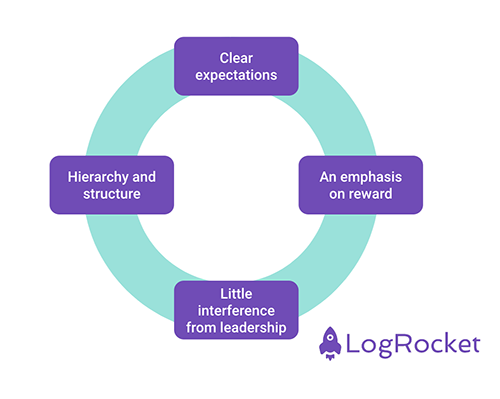Product management, as a concept and profession, began to emerge in the ’90s and was formally introduced in the early 2000s. Product managers were responsible for defining product strategies, conducting market research, and working with cross-functional teams to bring products to market.

Nowadays, nearly every company has a development team and uses an agile framework for product management. Since digitalization has intertwined with all categories of products and service offerings and brand identity is directly proportional to user experience and user value, companies strive to be customer-centric and look at product management as a crucial part of operations.
As product management evolved, so did leadership styles. In the early days, there was a need for command and control leadership, where leaders dictated the “what” and the “how,” and employees built on the leader’s direction.
Then, with the increasing complexity and the change of pace in growth and evolution, leaders needed to take a more collaborative approach. Depending on the product type and offering, leadership styles mold and adjust to get the best results.
In this article, we’ll talk about one specific type of leadership: transactional leadership. We’ll talk about what it is, its key characteristics, how it differs from transformational leadership, its advantages and disadvantages, and where it fits into product management.
You may be familiar with some of the other common types of leadership. These include:
Transactional leadership (or transactional management) differs from these in that it focuses on the exchange of the team’s work for some reward from leadership. This leadership style prioritizes individual interests and extrinsic motivation to meet a certain goal or outcome.
Simply put, employees are motivated to do a job in exchange for money or another type of reward. Leaders exhibit control and hierarchy, so employees look to them for direction.
The foundation of transactional leadership is command and control and offers rewards to get results. Four primary aspects of transactional leadership include:

It goes without saying that in transactional leadership, the most effective way to produce results is by making sure that people know what is expected of them. Set clear goals and metrics for measuring outcomes and continuously communicate with the team about the progress and hindrances, if any. Additionally, providing clear directions on how to work and processes to follow can help ensure success.
A sound reward system can be a powerful motivator for the team. Maintaining a balance between reward and expectation is essential to motivate employees effectively. If employees feel that their compensation is not worth their effort and is insignificant compared to the work they need to put in, it can demotivate them. This can have an inverse effect on their performance.
Similarly, setting unattainable goals for rewards can also hurt performance, as people think, “Why work hard when we cannot achieve it in the end anyway?” Ensure that the reward is encouraging enough for the employees to strive for it and go that extra mile. Goals should be challenging, yet achievable, to maintain a positive and uplifting work environment.
Leaders adopting the transactional leadership style should exercise control but refrain from intervening unless it’s necessary. Only when things begin to go astray, or the trend against the goal is negative should leaders step in, provide guidance, or take control of the situation.
With transactional leadership, the leaders set the direction. The team members follow established protocols while working on their goals. Hence, a clean hierarchy and structure are essential to escalate the issues and get directions if there are any changes in circumstances.
Regular performance monitoring is the key to keeping track of progress and indicates if any other action is needed to improve in any area. Performance monitoring can be an automated process where leadership only steps in if the trend is negative and if any support is needed.
In product management, there are many areas where a transactional leadership style can be appropriate.
One example is sticking to the budget and strict deadlines. These are very common in product management no matter the company size or industry. Specifically, in startup scenarios, budgets can be tight when creating an MVP. This is when it’s a good practice to give the team a clear direction and a goal.
Many startup founders have an idea and vision and use a transactional leadership style when chasing strict deadlines and crucial deliveries. Missed deadlines can mean huge losses or bad investments, so exercising control can be important at this stage of the company.
Another example of transactional leadership in product management is when there is a need to follow specific procedures and deliver according to regular reporting processes. This is common when submitting reports to the government or regulatory bodies. Here, a transactional leadership style can provide clear direction and motivation through rewards, which helps maintain the necessary regular work.
In general, transactional leadership can stifle creative thinking, innovation, and customer-centricity — all crucial factors that give companies an advantage against competition.
Transactional and transformational leadership sound similar, but they are two very different things.
Transformational leadership centers on inspiring and motivating people to achieve a definitive, positive change that solves a more significant problem. This leadership style is more individual-centric. As the leader, you empower people by fostering a culture of creativity and innovation and promoting loyalty, trust, and respect.
Four primary components of transformational leadership are different from transactional leadership:
Due to the core differences in the leadership style, transformational leaders tend to drive innovation and problem-solving culture. They create self-driven individuals to think outside the box while creating a safety net and room for failure to learn.
Transactional leadership is meant to produce pre-defined results with limited room for error. Depending on the organization’s needs, the leadership style can be applied to dictate the outcome.
Transactional leadership is most effective in situations that require routine, repetitive tasks. It’s designed to set clear direction and take command and control to ensure compliance. However, the reward and punishment mechanism associated with this leadership style works only briefly, resulting in quick results. To keep up with the motivation and commitment of the employees, in the long run, they need a more significant purpose that inspires them.
Understanding the goal is not enough — having a reason behind the goal can give workers a sense of purpose. When the organization needs an innovative approach, the team needs the freedom to experiment, fail, and learn. Punishment for failure creates a fear of taking chances outside the box and limits the possibility of creating something new.
Transactional leadership might not work the best to deliver a culture that fosters creativity in product areas where customer centricity and innovation are essential. However, without consequences, people may fail to adhere to basic quality controls and compliance checks while creating innovative products. Finding a balance of transactional and transformational leadership traits is usually the best approach.
Effective leadership requires assessing the situation and adapting the leadership style that best serves your organizational goals. Experienced leaders are flexible in their leadership style and mix traits of different leadership styles to achieve the best results.
Transactional leadership may not work independently in the new age of product management, but a mix of leadership traits can work wonders. Finding the right balance according to the organization’s needs sets a great leader apart.
Featured image source: IconScout

LogRocket identifies friction points in the user experience so you can make informed decisions about product and design changes that must happen to hit your goals.
With LogRocket, you can understand the scope of the issues affecting your product and prioritize the changes that need to be made. LogRocket simplifies workflows by allowing Engineering, Product, UX, and Design teams to work from the same data as you, eliminating any confusion about what needs to be done.
Get your teams on the same page — try LogRocket today.

Most teams fail at autonomy. Learn how clear rules help product teams move faster without micromanagement.

A practical framework for PMs to use AI in ideation without sacrificing judgment, strategy, or decision quality.

A practical five minute revenue estimation method to help product managers compare ideas, drop low impact features, and prioritize smarter.

A practical guide for PMs who want to stop being bottlenecks, delegate smarter, and lead teams effectively with a clear ownership framework.